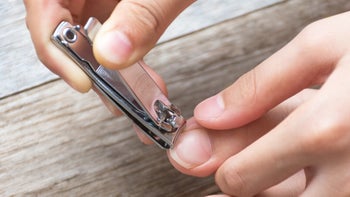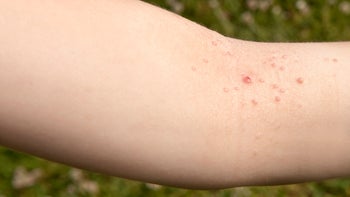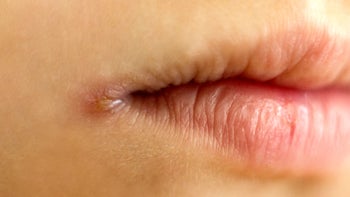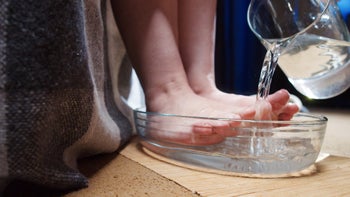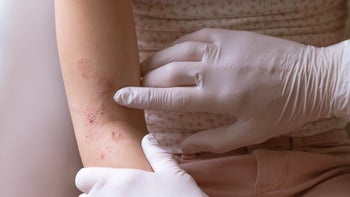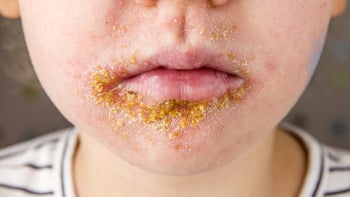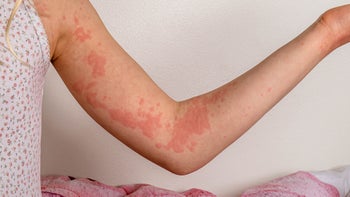
Impetigo Treatment: How to Banish This Contagious Skin Infection for Good
Key takeaways:
Impetigo is a highly contagious skin infection. It’s caused by the bacteria Staphylococcus aureus and sometimes Group A Streptococcus.
Prescription antibiotic ointment can treat impetigo. But antibiotics by mouth to treat the infection may also be needed.
Over-the-counter antibiotic ointments don’t usually work to treat impetigo. And there’s not enough evidence to say if natural remedies are effective.
Access savings on related medications
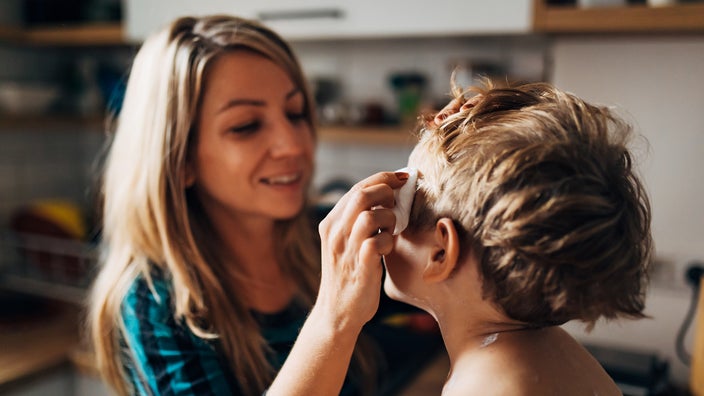
Impetigo is a common and very contagious skin infection. Young children are more prone to picking up impetigo. But you can develop impetigo at any age. You’re also much more likely to get impetigo if someone in your home has it. There are treatments for impetigo that help prevent it from spreading. If you or a loved one has been diagnosed with impetigo, here’s what to know about your impetigo treatment options.
What causes impetigo?
Two types of bacteria cause impetigo:
Staphylococcus Aureus: This bacteria causes bullous impetigo. People with bullous impetigo develop large, fluid filled blisters. These blisters aren’t painful.
Group A Streptococcus: This bacteria is best known for causing strep throat. But it also causes non-bullous impetigo. People with this impetigo develop small blisters that pop quickly. A yellow crust also appears.
Search and compare options
You can pick up impetigo by touching the fluid or crusting from one of these blisters. People also pass impetigo by sharing objects that touch the skin, like clothes or towels.
How do you treat impetigo?
Prescription antibiotics can treat impetigo. And they’re usually the same for adults and children.
Topical antibiotics
Antibiotic creams or ointments help treat mild impetigo.
For mild impetigo, topical antibiotic treatment is as effective as oral antibiotics. What’s more, antibiotic creams have fewer side effects than oral antibiotics.
Topical antibiotic treatments approved to treat impetigo include:
You apply these ointments to skin that has impetigo. Most people only need to use antibiotic cream twice a day for 5 days.
According to Dr. Maria Robinson, a board-certified dermatologist and dermatopathologist, “Antibiotic ointments and creams both work well, but many people don’t like the greasiness of ointments."
Robinson offers the following advice for using topical antibiotics to treat impetigo:
First, remove any crust before applying the antibiotic cream to help it absorb better.
If there’s a thick crust, cover the area with a warm, soapy washcloth for a few minutes to loosen and remove the crust.
Apply the cream or ointment to the entire area, including a rim of normal skin around the area. This helps to make sure you’ve treated the entire area.
Finally, cover the area with a bandage.
Oral antibiotics
You may need to take antibiotics by mouth if:
You have impetigo in many areas, making it too difficult to use topical antibiotics.
You’ve been using topical antibiotics but your impetigo isn't getting better
Many people in your home, work, or school have impetigo at the same time. In this situation, oral antibiotics can help stop the spread of impetigo faster.
There are several oral antibiotics that can treat impetigo. The best one depends on which bacteria is causing your impetigo.
Most cases of impetigo are caused by Staphylococcus aureus. Experts recommend treatment with:
If you have a cephalosporin or penicillin allergy, your healthcare provider may recommend erythromycin or clarithromycin instead.
If you have a history of infections with methicillin resistant Staphylococcus aureus (MRSA), you may need a different antibiotic like:
Most people need to take oral antibiotics for 7 days to treat impetigo.
Soap and water
While soap and water won’t cure impetigo, they’re an important part of impetigo treatment. Gently clean your skin with a mild soap and warm water before applying antibiotic creams.
Cleaning impetigo lesions with soap and water also removes extra bacteria from your skin. This may help lower the risk of spreading the bacteria.
You should also wash your hands this way often and after you apply your antibiotic cream. This will keep the bacteria off your hands. And it will help you prevent it from spreading to other parts of your body or surfaces.
It’s also a good idea to always wash clothes, towels, and anything else that touches your skin. You can use regular detergent. But try to opt for the hot water setting on your washing machine.
Do over-the-counter antibiotics or natural remedies work for impetigo?
OTC antibiotic creams and ointments aren’t recommended for impetigo treatment. They don’t always work well against bacteria that cause impetigo. This includes all popular OTC antibiotic creams like Polysporin, Bacitracin, and Neosporin.
Some natural remedies people turn to for impetigo treatment include:
Tea tree oil
Olive oil
Coconut oil
Aloe vera
Manuka honey
Garlic
Some of these natural remedies have antibacterial properties. And people have reported success using these remedies to treat many skin conditions.
But Dr. Robinson cautions: “There isn’t strong evidence showing that natural remedies work for impetigo, so they aren’t recommended as a treatment. Even if a natural treatment works for one person, it may not work for someone else, so more research needs to be done looking at their effectiveness. And all this is confounded by the fact that impetigo may clear on its own in some people.”
Remember that these natural remedies aren’t recommended for impetigo treatment. But if you’re interested in these treatments, talk to your healthcare provider. Together, you can decide whether you can add them to your antibiotic treatment.
How long is impetigo contagious?
Here’s some good news — the risk of spreading impetigo drops once you’ve used antibiotics for 24 hours. That means you can go back to work or school and not worry about spreading impetigo to others. It also means you don’t have to worry about new impetigo blisters popping up on other parts of your body.
But without antibiotic treatment, impetigo remains contagious until the rash completely goes away. Studies show this can take anywhere from a week to a month. So getting treatment can get you back to your regular life faster.
The bottom line
Impetigo is a very contagious skin infection. Treatment options include prescription antibiotic creams and ointments for mild impetigo. Oral antibiotics are better for more severe rashes. Over-the-counter antibiotic creams and natural remedies aren’t recommended for impetigo treatment. They may not always work as a treatment.
Why trust our experts?


References
American Academy of Dermatology Association. (2021). Impetigo: Diagnosis and treatment.
Centers for Disease Control and Prevention. (2022). Impetigo.
Chhawchharia, A., et al. (2022). In vitro antibacterial activity of Western Australian honeys, and manuka honey, against bacteria implicated in impetigo. Complementary Therapies in Clinical Practice.
Edge, R., et al. (2017). Topical antibiotics for impetigo: A review of the clinical effectiveness and guidelines.
Gupta, M., et al. (2020). Home remedies in different pediatric dermatoses: An observational study. Dermatologic Therapy.
Hartman-Adams, H., et ak. (2014). Impetigo: Diagnosis and treatment. American Family Physician.
Hartman-Adams, H., et al. (2014). Impetigo: Diagnosis and treatment. American Family Physician.
Hoffmann, T. C., et al. (2021). Natural history of non-bullous impetigo: A systematic review of time to resolution or improvement without antibiotic treatment. The British Journal of General Practice : The Journal of the Royal College of General Practitioners.
Kosar, L., et ak. (2017). Management of impetigo and cellulitis. Canadian Family Physician.
Medimetriks Pharmaceuticals, Inc. (2017). XEPITM (ozenoxacin) cream, for topical use [package insert].
Stevens, D. L., et al. (2015). Practice guidelines for the diagnosis and management of skin and soft tissue infections: 2014 update by the Infectious Diseases Society of America. Clinical Infectious Diseases.
Whatcom County. (2010). Impetigo.




